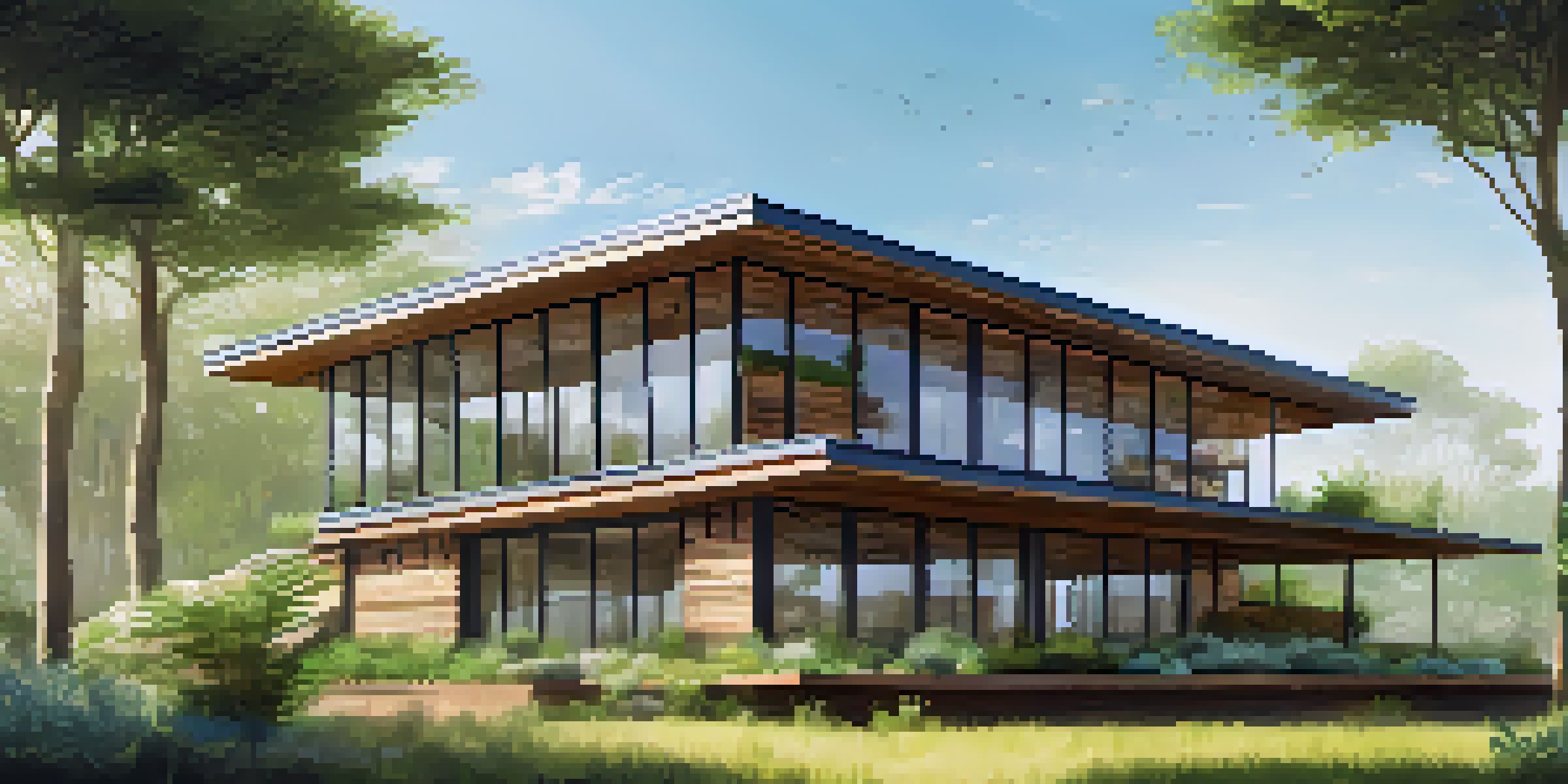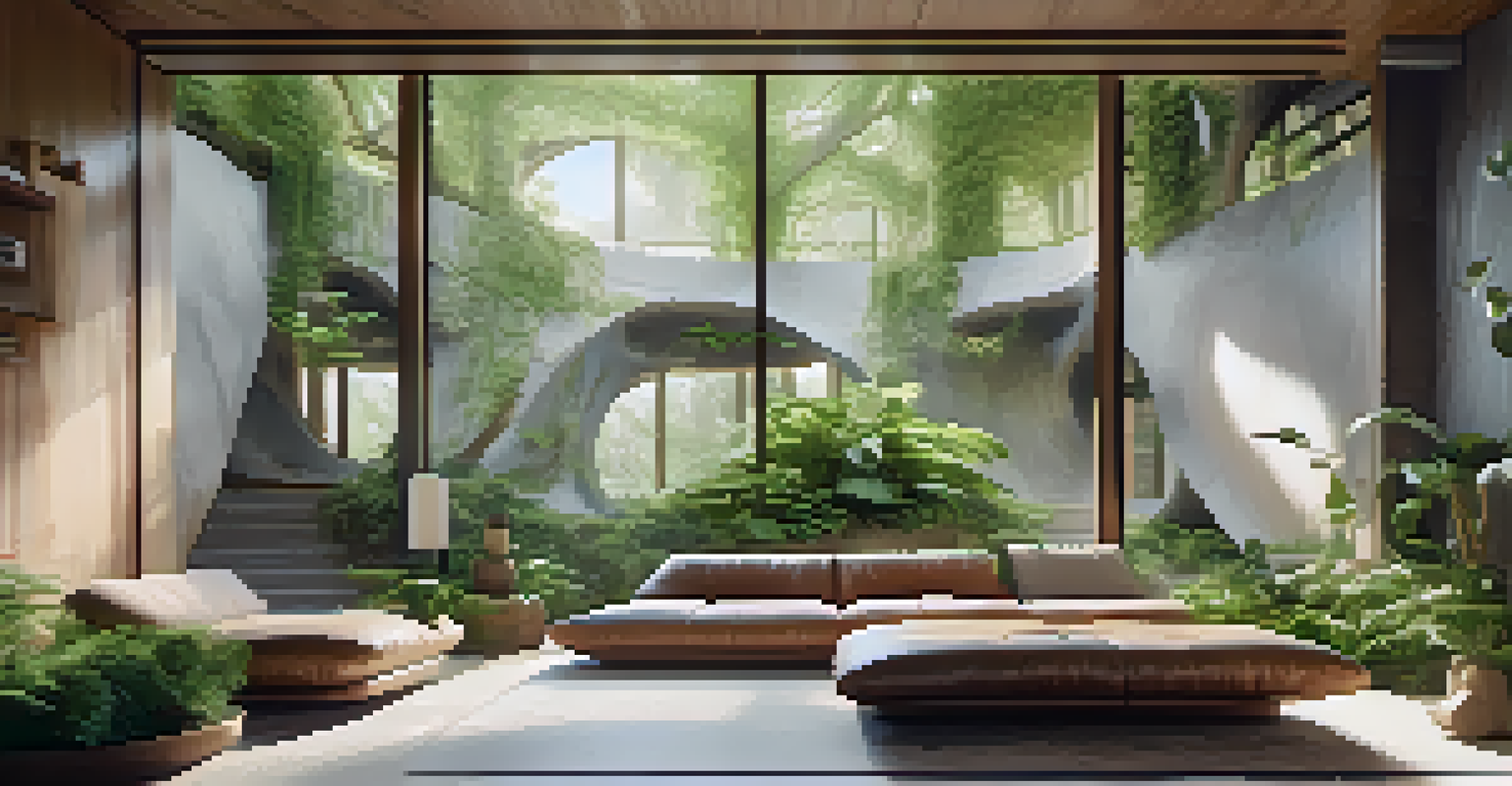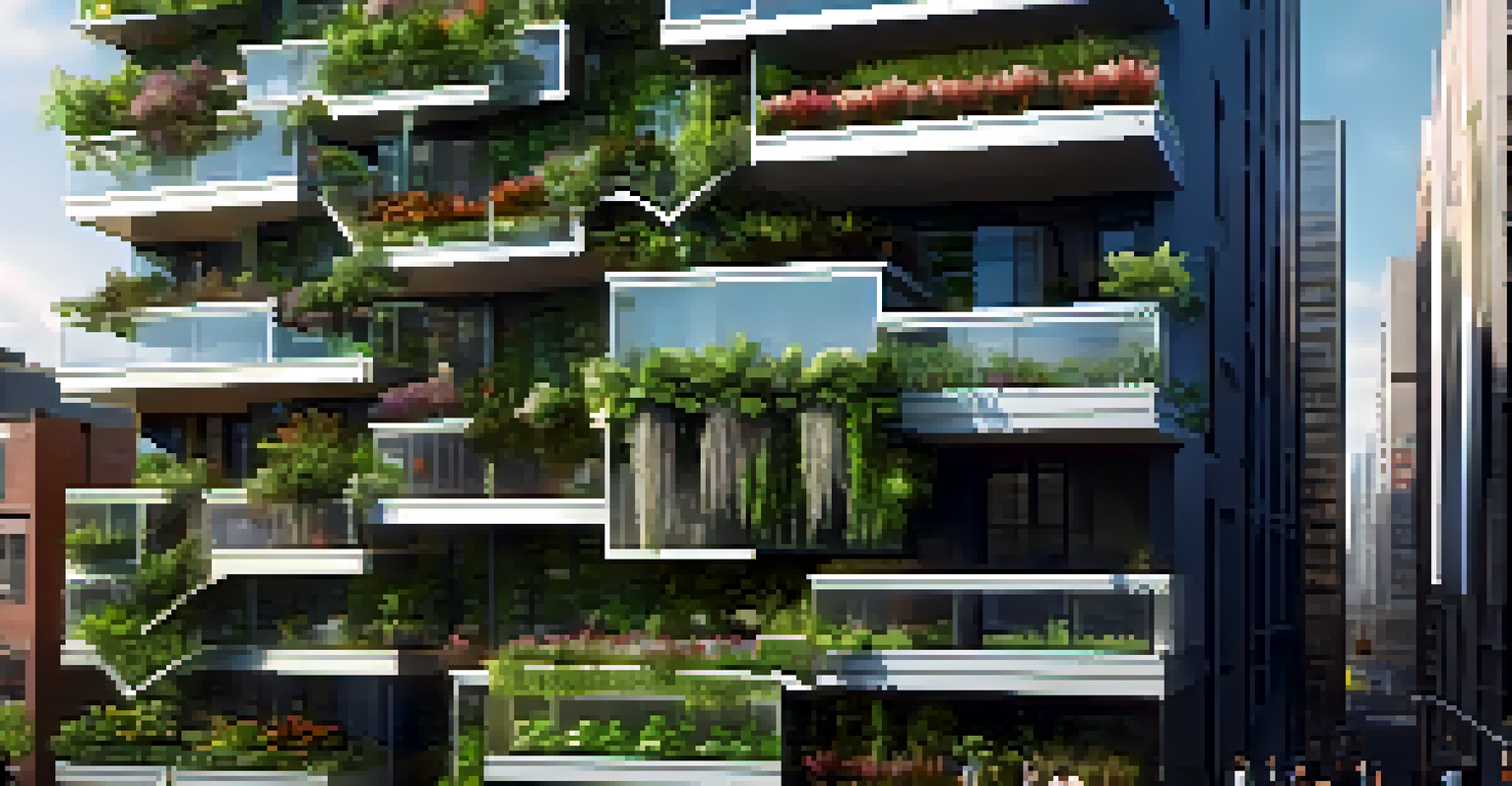Sustainable Materials: The Future of Plant-Inspired Architecture

Understanding Sustainable Materials in Architecture
Sustainable materials are those that minimize environmental impact while providing quality and durability. They often come from renewable sources, which means they can be replenished naturally over time. By focusing on sustainability, architects and builders can create structures that not only serve human needs but also respect the planet.
The greatest threat to our planet is the belief that someone else will save it.
These materials can range from bamboo and reclaimed wood to bio-based plastics and recycled metals. Each option presents unique benefits, such as lower carbon footprints and reduced waste. As the demand for eco-friendly construction rises, the innovation behind sustainable materials continues to expand.
Incorporating these materials into architecture isn’t just about being trendy; it’s a necessity for our future. As we face climate change and resource depletion, designing with sustainable materials can help mitigate these issues. It's not just about aesthetics but about creating a healthier, more sustainable world for future generations.
The Role of Biomimicry in Architecture
Biomimicry is the practice of drawing inspiration from nature to solve human challenges. In architecture, this means looking at how plants and animals have evolved to adapt to their environments and applying those principles to building design. For example, the structure of a leaf can inspire energy-efficient designs that maximize sunlight.

By observing nature, architects can create buildings that are not only beautiful but also functional and sustainable. This approach often leads to innovative solutions, such as using natural ventilation systems inspired by termite mounds. These designs can significantly reduce energy consumption and improve indoor air quality.
Sustainable Materials Are Essential
Using sustainable materials in architecture minimizes environmental impact while promoting durability and quality.
As architects embrace biomimicry, the lines between nature and built environments begin to blur. This philosophy not only enhances the aesthetic appeal of buildings but also fosters a deeper connection between inhabitants and the natural world. Ultimately, it encourages a sense of responsibility towards the environment.
Innovative Plant-Based Materials in Construction
There’s an exciting range of plant-based materials making waves in construction today. For instance, mycelium, the root structure of fungi, is being used to create lightweight, biodegradable bricks. These bricks not only provide excellent insulation but also reduce the need for conventional, energy-intensive materials.
Nature does not hurry, yet everything is accomplished.
Another example is hempcrete, which is made from hemp fibers mixed with lime. This material is lightweight, carbon-negative, and incredibly durable, making it a fantastic alternative to traditional concrete. As more builders recognize the benefits of these innovative materials, we can expect to see a shift in how structures are designed and built.
By incorporating these plant-based materials, architects can create buildings that are not just environmentally friendly but also contribute positively to the ecosystem. This shift represents a crucial step towards a more sustainable future in architecture, where the materials used enhance the overall health of our planet.
Benefits of Plant-Inspired Architecture
Plant-inspired architecture offers numerous benefits, starting with energy efficiency. Buildings designed with natural ventilation and strategically placed greenery can significantly reduce cooling and heating costs. This not only saves money for homeowners but also lowers the building's carbon footprint.
Moreover, these designs often lead to improved occupant well-being. Natural light, greenery, and organic materials contribute to healthier indoor environments, boosting productivity and mental health. As we spend more time indoors, creating spaces that harmonize with nature becomes increasingly important.
Biomimicry Enhances Design Innovation
Drawing inspiration from nature, architects can create functional, beautiful, and energy-efficient buildings.
Finally, embracing plant-inspired architecture can enhance biodiversity. By incorporating green roofs, living walls, and native plant landscaping, buildings can support local ecosystems. This approach not only beautifies urban areas but also provides habitats for various species, promoting ecological balance in our communities.
Case Studies: Successful Plant-Inspired Projects
Several projects around the world exemplify the potential of plant-inspired architecture. One notable example is the Eden Project in the UK, which features biomes made from geodesic domes housing diverse plant species. This project not only showcases sustainable materials but also educates visitors about the importance of biodiversity.
Another inspiring case is Bosco Verticale in Milan, Italy, a residential complex covered in thousands of trees and plants. This design not only improves air quality but also promotes urban biodiversity. The vertical forest concept can be replicated in various urban settings, bringing nature back into our cities.
These case studies demonstrate that plant-inspired architecture can be both functional and visually stunning. By learning from these successful projects, architects and designers can continue to innovate and push the boundaries of sustainable building practices.
Challenges in Adopting Sustainable Materials
Despite the clear benefits, there are challenges in adopting sustainable materials in architecture. One significant hurdle is the perception that these materials may be less durable or more expensive than traditional options. This misconception can deter builders and architects from exploring innovative solutions.
Supply chain issues can also hinder the widespread use of sustainable materials. Many eco-friendly materials are still emerging, and sourcing them can be more complicated compared to conventional materials. However, as demand grows, it’s likely that supply chains will adapt and evolve to meet these needs.
Plant-Based Materials are Game Changers
Innovative plant-based materials, like mycelium and hempcrete, offer eco-friendly alternatives that support sustainability in construction.
Education and awareness play a vital role in overcoming these challenges. By informing architects, builders, and clients about the advantages of sustainable materials, we can foster a culture of innovation and sustainability in the industry. This collective effort is essential for paving the way toward a greener future in architecture.
The Future of Architecture: A Sustainable Vision
Looking ahead, the future of architecture is undeniably intertwined with sustainability. As cities continue to grow and climate concerns escalate, the need for eco-friendly building practices will become more pressing. Architects will play a crucial role in shaping this future by integrating sustainable materials and plant-inspired designs into their projects.
Technological advancements will also contribute to this vision. Innovations such as 3D printing with sustainable materials and smart building technologies can revolutionize the construction industry. These developments will make it easier and more cost-effective to implement sustainable practices across the board.

Ultimately, a sustainable vision for architecture is not just about reducing environmental impact; it's about enriching lives and communities. By prioritizing harmony with nature, we can create spaces that enhance our quality of life while protecting the planet for generations to come.